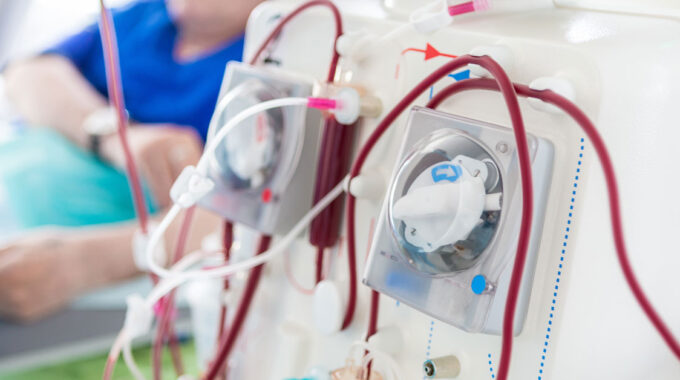
Why People with Kidney Disease Do Not Use Hospice
People with advanced kidney disease prove half as likely to use hospice as people with terminal cancer, and they use hospice for much shorter periods.1 This is unfortunate since both diseases in their terminal states can cause significant pain and other symptom burden. In fact, patients with advanced kidney disease have similar mortality and disease burden as patients with terminal cancer. Hospice proves highly effective at managing these symptoms, providing peace and dignity for patients during their last months. Why would people with kidney disease use hospice so much less? Ann O’Hare and her research colleagues did a lot of work to figure out why. The Journal of the American Society of Nephrology published the results of their research last month.2
How Much Less Hospice Do People with Kidney Disease Receive?
As mentioned earlier, patients with advanced kidney disease use hospice half as often as patients with cancer. Even worse is the fact that patients with kidney disease receive hospice for much shorter periods, an average of 5 days in hospice. Compare this to the overall average time with hospice for all diagnoses, 17 days. An even more stark comparison emerges when we consider that the recommended length of hospice care is 90 days. The average hospice patient with kidney disease receives less than 6% of the recommended time in hospice.3-5
How Does Hospice Help People with Advanced Kidney Disease?
People with advanced kidney disease get the same benefits of hospice care as people with other diseases. Hospice improves symptom control, emotional support, care coordination, patient/family satisfaction, and quality of life during a very important time. Among dialysis patients specifically, hospice cuts Medicare spending by more than two-thirds, lowers hospitalizations 53%, and lowers intensive care procedures 90%.6
Why is Hospice Used So Much Less in Kidney Disease?
To answer this question, O’Hare et al. randomly selected Veterans Administration medical records of patients with advanced kidney disease where the record mentioned hospice. Then researchers read what the records said about hospice to illuminate themes in hospice decisions. They reviewed 1,000 records. Major themes included using hospice as a last resort, complexity of care, and preparedness of family caregivers for patients to go home. However, the primary major theme and an important underlying reason for most other themes was a strange Medicare policy that forces patients to give up dialysis to receive hospice!
What is Hemodialysis?
Dialysis is a life-sustaining treatment for people with end-stage kidney disease. Treatments usually last four hours and are done three times per week. The process removes excess water, solutes, and toxins from the blood when people’s kidneys can no longer perform these functions adequately. People who have lost 85% or more of their kidney function and who quit dialysis usually have about one week to live.
Why Does Medicare Require People to Give Up Dialysis for Hospice?
The answer is a misclassification of the treatment. Medicare pays 100% for all allowable hospice charges when patients meet all criteria. One such criterion is that Medicare will not pay for treatments that are curative in intent while also paying for hospice. Patients are always free to discontinue hospice if there is a reason to continue curative treatments. However, Medicare is not supposed to try to limit access to life-sustaining treatments. There is a difference between curative and life-sustaining. For instance, Medicare lets patients with COPD continue to receive supplemental oxygen during hospice. Similarly, Medicare does not require diabetics to give up insulin for hospice. Only patients receiving dialysis are required to give up life-sustaining medical care this way.
How Patients Can Get Dialysis and Hospice Concurrently
Medicare will pay for dialysis and hospice at the same time for some patients. In August 2014, Medicare ruled that dialysis will be considered palliative (not curative) if the primary hospice diagnosis is not end-stage kidney disease. For instance, a dialysis patient with a primary hospice diagnosis of colorectal cancer would be eligible for both hospice and dialysis. Of course, this loophole will only be available to a subset of the patients who need both dialysis and hospice.
References:
- Saran R, Robinson B, Abbott KC, Agodoa LYC, Bragg-Gresham J, Balkrishnan R, et al: US Renal Data System 2018 Annual Data Report: Epidemiology of kidney disease in the United States. Am J Kidney Dis. 73: A7–A8, 2019.
- O’Hare AM, Butler CR, Taylor JS, Wong SP, Vig EK, Laundry RS, Wachterman MW, Hebert PL, Liu CF, Rios-Burrows N, Richards CA. Thematic Analysis of Hospice Mentions in the Health Records of Veterans with Advanced Kidney Disease. Journal of the American Society of Nephrology. 2020 Aug 6.
- Medicare Payment Advisory Commission: Hospice services. Available at: www.medpac.gov/docs/default-source/reports/mar19_medpac_ch12_sec.pdf2019. Accessed August 24, 2020.
- Teno J, Shu J, Casarett D, et al Timing of referral to hospice and quality of care: Length of stay and bereaved family member’s perceptions of the timing of hospice referral. Journal of Pain and Symptom Management. 2007; 34: 120-125.
- Rickerson E, Harrold J, Kapo J, et al. Timing of hospice referral and families’ perceptions of services. Are earlier hospice referrals better? Journal of the American Geriatric Society. 2005; 53: 819-823.
- Wachterman MW, Hailpern SM, Keating NL, Tamura MK, O’Hare AM. Association between hospice length of stay, health care utilization, and Medicare costs at the end of life among patients who received maintenance hemodialysis. JAMA Internal Medicine. 2018 June; 178 (6): 792-799.





